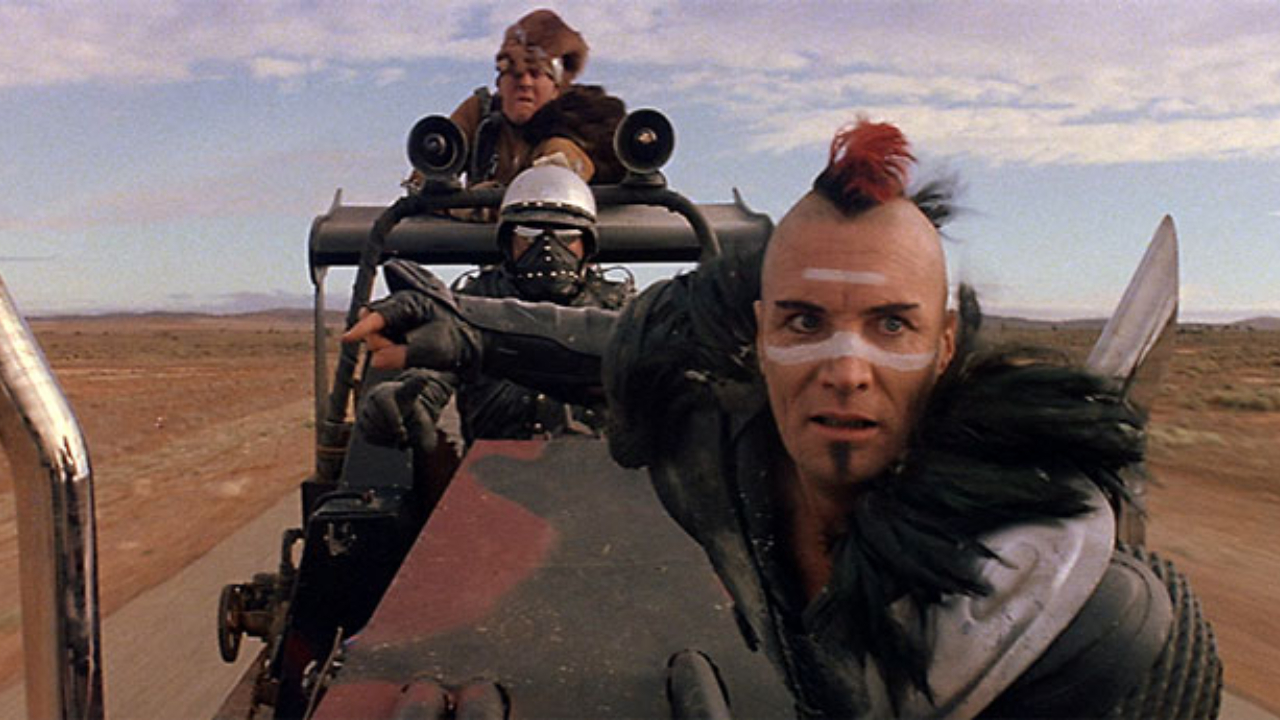By David Weiner
“My life fades. The vision dims. All that remains are memories. I remember a time of chaos, ruined dreams, this wasted land…”
He has only one name, but he may as well be The Man With No Name; we’re not talking THE ROAD WARRIOR‘s anti-hero Max Rockatansky, or Clint Eastwood’s squinty gunslinger for that matter. We’re talking about Wez, the menacing foil to Mad Max, the rabid dingo of the post-apocalyptic wasteland — and one of the most memorable movie villains in cinema history.
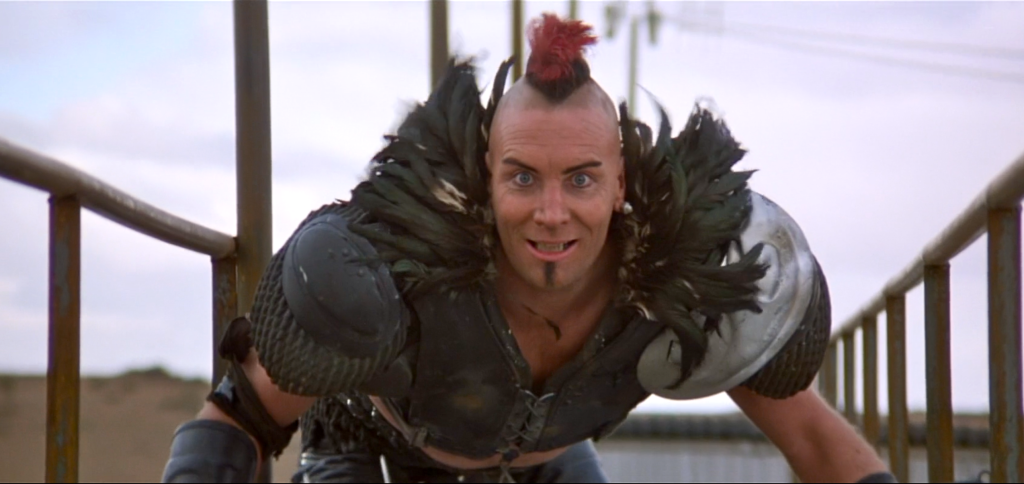
I sat down with the man behind the mohawk, Vernon Wells, to talk about the making of THE ROAD WARRIOR, the untold origins of his savage character, what scared him the most about being in the film, and to unearth new, behind-the-scenes secrets from one of the most influential movies ever made.
“I admit that when we did it, we all had these visions of grandeur,” revealed Wells, like a mystical storyteller. “We all thought that this was going to be the Academy Award-winning movie of all time, and it was going to create a whole new generation of films and break the mold. And the problem is, it fucking did.”
Ever since his big-screen debut as Wez in the 1982 George Miller-directed sequel to MAD MAX, Wells has carved out an impressive career playing an assortment of villains, heroes and colorful characters, with more than 150 films and TV projects under his belt. Other than THE ROAD WARRIOR, his psychopathic turns in the ‘80s films COMMANDO, WEIRD SCIENCE, INNERSPACE, and CIRCUITRY MAN, alongside the small screen’s POWER RANGERS in the 2000s, remain fan favorites.
“[THE ROAD WARRIOR] was my 15 minutes of fame, and I managed to turn it into 40-odd years of an amazing career,” beams Wells. Ironically, the Australian-born, part Aboriginal actor never intended to have a career in film and television. He was on the path to become a rock star, until a fateful car crash had other plans.
“I’m an actor by default, not by design,” he says. Wells was following in the footsteps of his mother, a successful songwriter, fronting bands and living the rock ’n’ roll lifestyle ’til that unfortunate band van collision left him with fractured vertebrae and unable to walk for a period of time. He recovered to pursue modeling and extra work. But for such a larger-than-life onscreen character, Wells confesses that he has always been rather timid to step into the spotlight, and has often needed that extra nudge from family, friends or confidants to make the leap from the background to the forefront. One of those leaps of faith — at the urging of Wells’ brother — was taking on the role of the gay biker Cuirette in the Michel Tremblay play Hosana. But as luck would have it, George Miller’s fiancee saw him on the stage and immediately thought about casting him. That led to a meeting with Miller in Sydney over coffee, some shared laughs over dirty jokes, and then a few months later Wells was heading out to the isolated, barren-earth MAD MAX 2 location in the mining town of Broken Hills — aka Nowheresville, Australia.
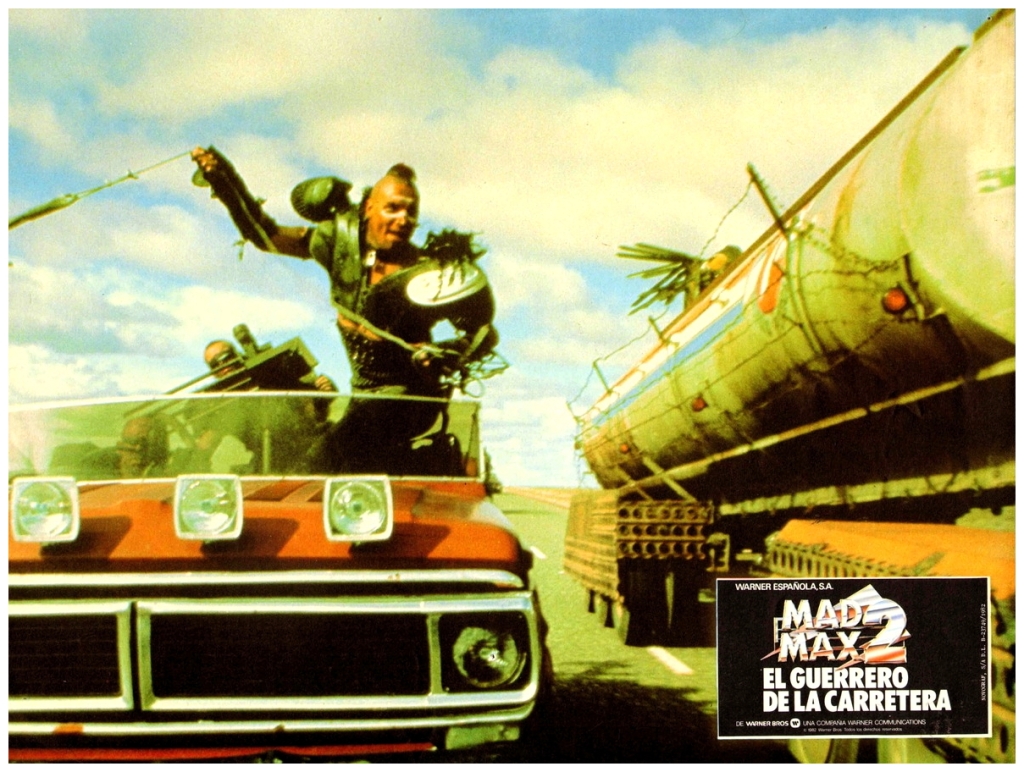
Other than those intimidating shoulder pads, black bird feathers, war paint and assless chaps, a key element to the look of the Wez character is his colorful, crimson-tipped mohawk. “The mohawk was kind of fun,” smirks Wells. “They shaved my head about a month before we filmed, and if you think back, that was at a time when mohawks on kids walking down the street was not really the ‘in’ fashion. And they did it then because your head under your hair gets sunburned very quickly, and the last thing they needed was me [needing] additional makeup.”
And then there was that memorable plane ride out to the location: “I had the mohawk, and everybody was going, ‘Crap, Vernon, can you wear a hat? We’re getting on a plane with real people, you know?’ And the makeup lady said, ‘Anybody up for a little fun?’ …. So she put a lobotomy scar on my head with stitches and the whole thing, and they led me on the plane and sat me down. And when the sweet little hostess came up, she sort of looked at me and then [my seat mate], and he said, ‘Oh, he’s a rapist. They couldn’t get him to stop, so they took out that bit of his brain.’ Then I went, ‘Yaaaaajhhh’ [makes groping gesture] — this woman, she just died. I tell you, she had a baby on the spot. Wouldn’t come near us for the rest of the flight. … And, of course, George loved us for that.” Wells then clarifies, “We did a lot of innocent pranks which nobody got hurt in. It was like little schoolboys playing.”
Decorum on set, however, was an entirely matter, as Wells reports that Miller ran a very tight ship and there was no room for tomfoolery when the cameras were running. “My god, the set was controlled so tightly for safety,” he says. “You could not fart unless you asked permission. You didn’t play, you did your job. And that was the whole thing when we started that film: George said, ‘This movie is safety conscious, and if you don’t want it, leave now.’ And he was serious. Because you’ve got to think about it, with all those vehicles driving around there, one misstep and someone’s getting run over by a 16-wheel truck — and I was on the front of it, jumping up and jumping off, just holding on. There were a couple times where, even with my daredevil attitude, it got a little bit like, ‘Why am I doing this? They don’t pay me enough.’”
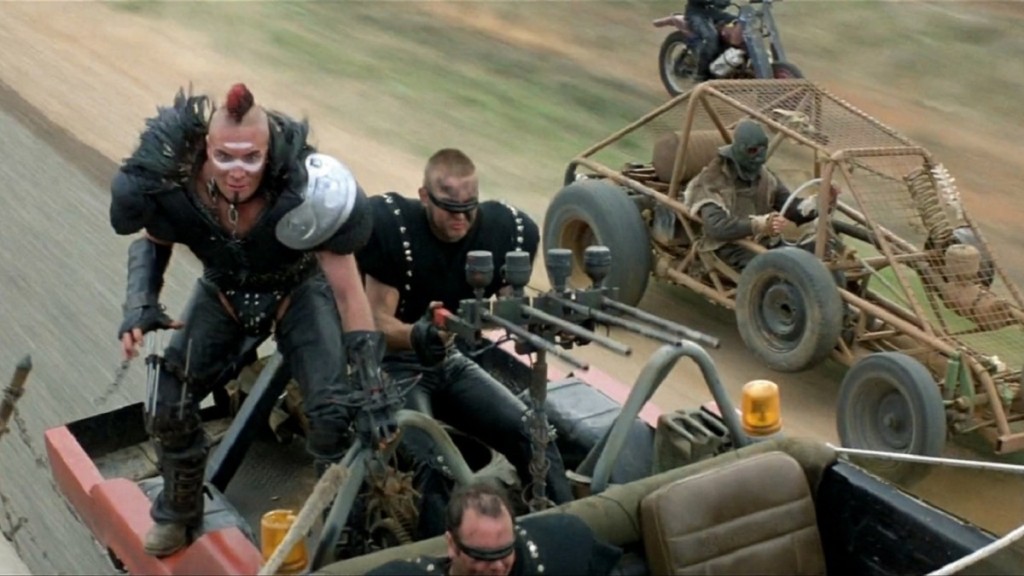
Of course, THE ROAD WARRIOR was shot in the pre-CGI age, when what you saw in the final cut were actual stunts being performed for the camera. “You couldn’t do it these days,” reflects Wells, adding, “We did a helluva lot of those stunts ourselves. There were a couple times that I ended up in positions that could have been dangerous.” But because the action-packed environment was so carefully controlled and choreographed, Wells says there were very few injuries, amounting to only a few “unavoidable” broken bones here and there.
With Gibson’s Mad Max character traversing the wastelands of Australia in search of petrol, food and supplies, one would think THE ROAD WARRIOR’s desert setting of Broken Hill would be brutally hot. Instead, it was the other way around: It was absolutely freezing. “It was not happy days with the sun shining — it was happy days with Vernon’s ass going purple,” quips Wells, referencing those unfortunate, extra-revealing leather chaps. “We were in a valley between two mountains, the wind would come down off the mountains, and I didn’t wear a lot, so they called me Barometer Butt.” It was so cold, in fact, that Gibson would stand by for his scenes wrapped in a giant blanket. Also dressed head-to-toe in leather, his teeth would chatter as the crew would tweak the final touches for a shot. But once Miller would yell, “Action!” Gibson’s teeth would stop, he’d play the scene as if it was a hot desert day, then go back to chattering once they’d call, “Cut!”
As the original MAD MAX 2 script was written, the character of Wez was intended to be a much smaller, ancillary character. “It became bigger, I think, because of who I am,” says Wells. “I put a lot of energy in it, so the character just became bigger than he was written, and George allowed me to play with that.”
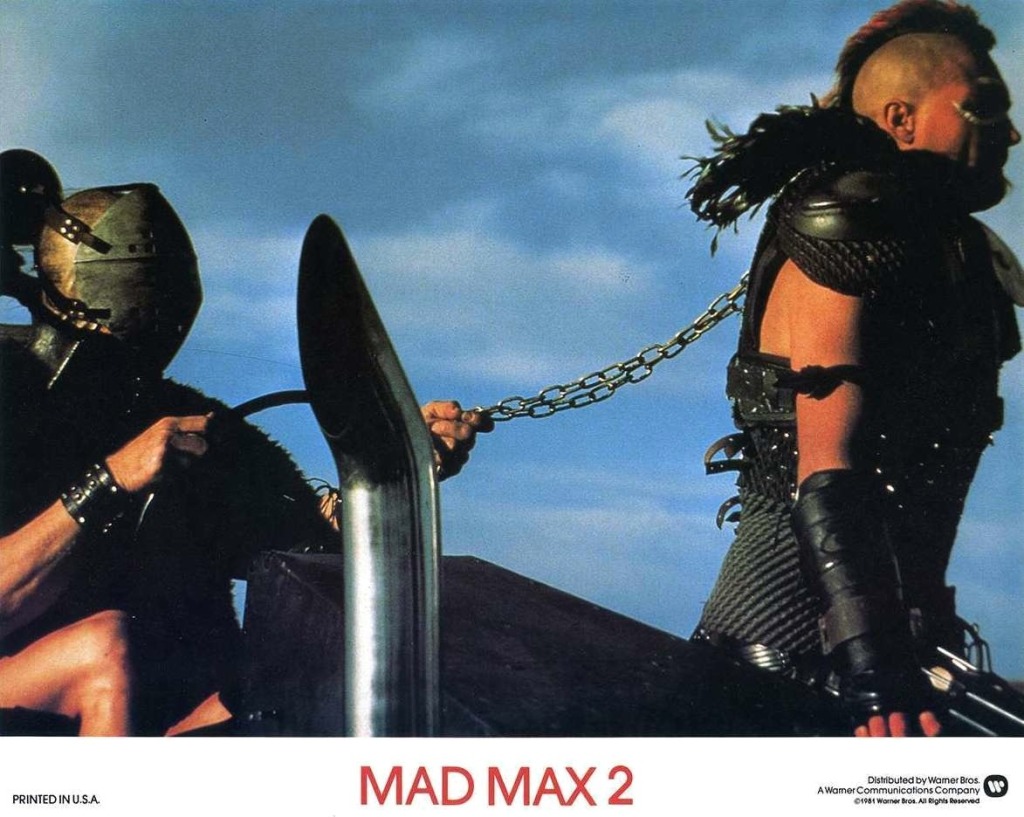
There is very little dialogue in the entirety of the final cut of THE ROAD WARRIOR, and thus character backgrounds are sacrificed to make way for pure, obvious motivation: kill or be killed for “the precious juice.” Still, Miller wanted every one of his actors to know where they came from and why they behave as they do, so he set them down to write their own characters’ stories. “Around the table, good guys, bad guys, we had to write a backstory from when we were born … until we had a solid, solid backstory of who we were,” explains Wells. “When it was over, we were all closer. We were bonded.”
So, who is this guy Wez? “I gave him a name: His name was Wesley Alan Hardy. And to me he was just a guy who was born to middle-class, average parents. His father worked, his mother worked, he went to school. But he was an adventurer. He always wanted to be out there doing things, he was a little bit of, ‘I’ll climb that tree and see if I can actually get to the top before one of the branches breaks.’ And when the war came, he was one of the first to go. … He trained and became special forces and went to Vietnam; went through a lot, saw a lot, came back a totally different human being. And then, when the meltdown came and the crisis arrived, he had two choices: He could pack his bags and head for the hills and find a cave somewhere, or he could take charge, because he was a survivor, and that was his whole modus operandi. He was going to survive, no matter what it took. He joined this group because they had the numbers, they had the power to defend themselves, but he always wanted to No. 1. That was why there was always an internal struggle with Humungus. … And the reason for the mohawk was I always wanted to play an Indian in a film.”
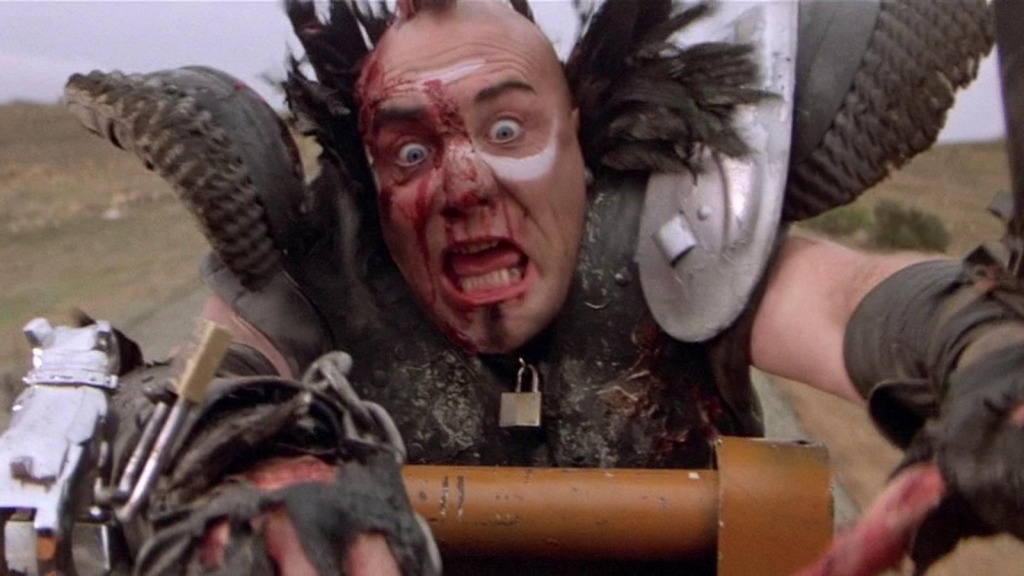
Still, on those brutally cold and windy days on the Broken Hill set, Wells would sometimes have a hard time finding his motivation for being such a maniacal, car-hopping killer. Remember, Wez foams at the mouth, but Wells could still be that timid guy underneath looking for a nudge when appropriate. “George was a brilliant man who knew what to get and how to get it, and an incredible psychiatrist, by the way,” says Wells. “Because I really didn’t want to do the film. I didn’t think I could. I was so scared of screwing it up. Once you look at the character of Wez, he became such a focal point of the film that it had to work, and that scared me. It was my first film.”
Asking Miller one day to help him get a better lock on his apocalyptic alter ego, Wells recalls that the director told him, ‘“Look at it this way: At the corner of your street there’s a supermarket. Overnight, a sudden flare takes out everything. No electricity, no phones, no computers, nothing. The only thing that’ll run are old cars, because they don’t have any computerized bits in them. But that supermarket is full of water, packaged food, everything you need to survive the next 10 years if you do it smartly. What are you going to do?’” Wells replied, “‘I’m going to get my ass down there with a very large gun and kill anybody that tries to take it off me.” And Miller went, ‘You’ve got the character now, son.’”
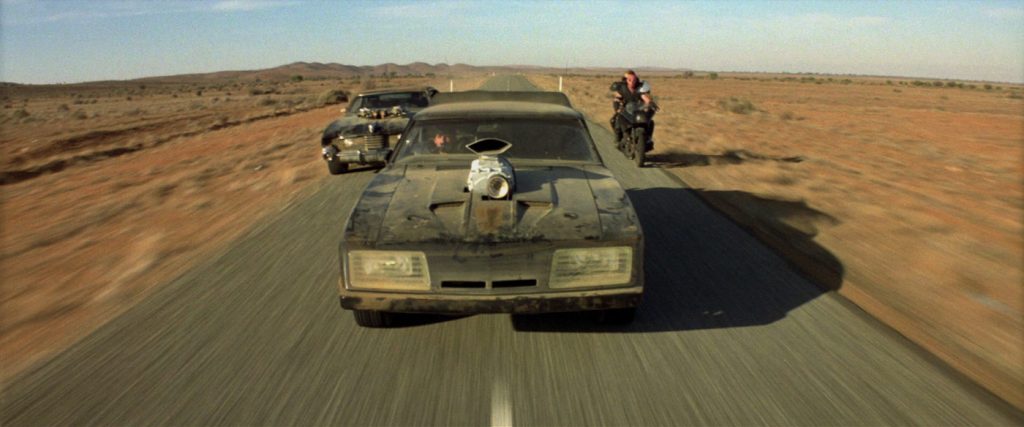
Wells adds that he hadn’t seen the original MAD MAX before he stepped on the set of the sequel, and made a conscious choice not to watch the film that swept the Australian box office in 1979. “What I needed to do was create a character that was unique to what I was doing, not be persuaded by what I had watched in the first one,” he explains. “Because you’ve got the Toecutter and all those guys, and so I would’ve modeled Wez after them, and that’s not what we wanted to do. He had to be a unique, different character. So, it was a personal decision. I watched it after we finished filming. I liked it, I thought it was great. Then I realized that if I had watched it before filming [THE ROAD WARRIOR] I’d be totally different, because I would’ve put those elements into it.”
While there was a formidable amount of machismo on the ROAD WARRIOR set, Wells remembers only smooth sailing and solid camaraderie among all working those long, arduous days. “On the whole shoot, I don’t think I ever saw one disagreement with anybody,” he says. “Everybody was just so mellow and so cool and just having fun.”
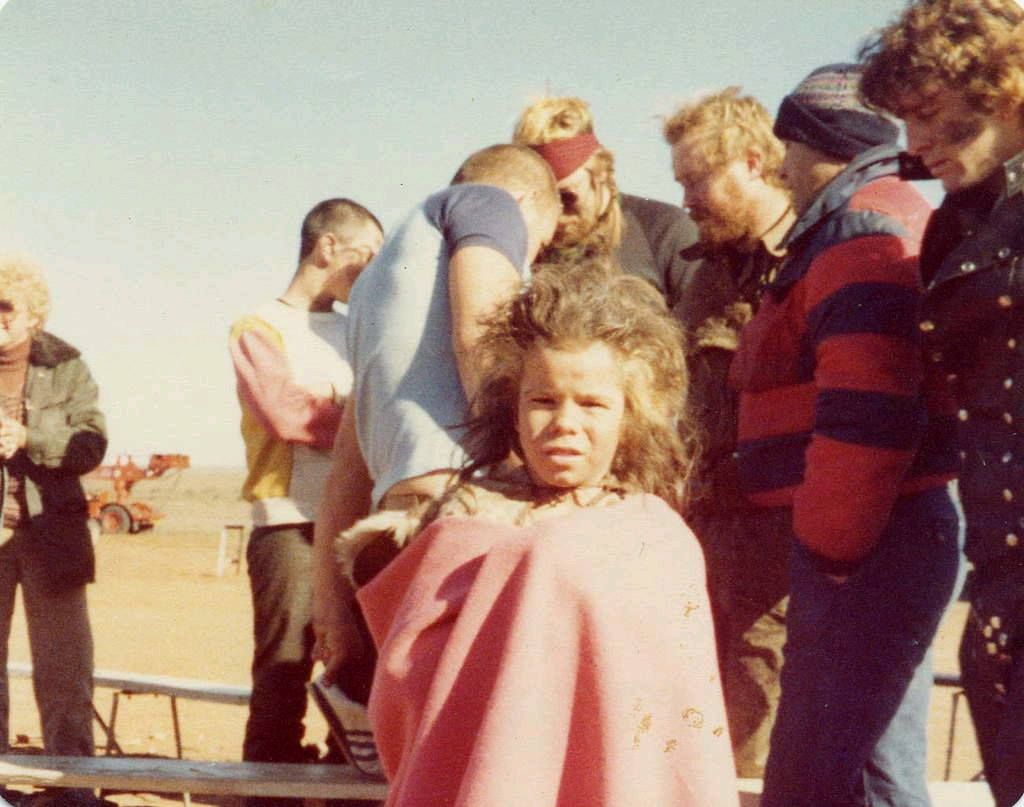
But that fraternity came at a bit of on-camera emotional cost when it came to shooting one of the more pivotal, antagonistic scenes of the movie. “I love kids, so I got on extremely well with [The Feral Kid, played by Emil Minty], and George used to say to me, ‘Don’t become good friends.’ And I couldn’t help myself. Every time I’d get on set and see him I’d say, ‘It’s not a snack, it’s EMIL!’ And he hated it. … When we came to the scene at the end of the film where I come over the bonnet and grab his hand, he’s supposed to freak out. Well, the first time we did it, he just looked at me and laughed. He was 10 years old — to him it was a game, like hide and go seek. And George came up to me and said, ‘I told you.’”
Miller’s clever solution to draw a genuine, more fearful reaction from Minty saw the makeup department putting a hidden piece of syrup-soaked foam on Wells’ palm: “When I came up over the bonnet and grabbed his hand, the blood went everywhere and he just freaked,” laughs Wells. “And I felt so bad. But it’s just that sometimes you should do what you’re told.”
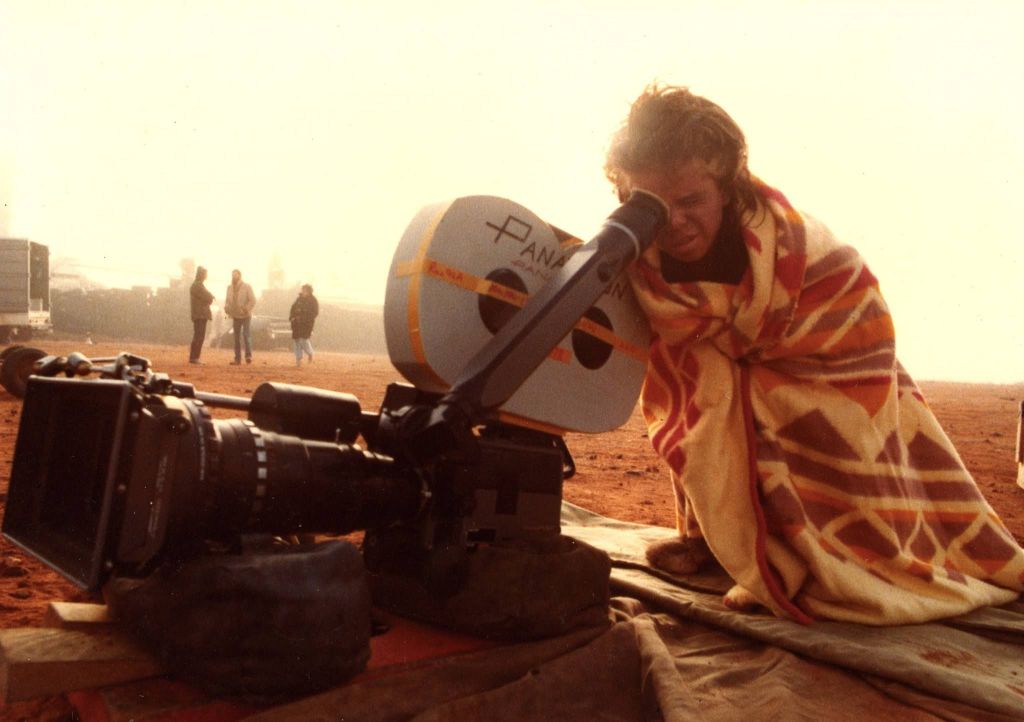
Once the final “martini shot” was called at the end of each production day, the cast and crew would often converge for drinks and/or trips to the local casino, which spikes a wry smile from Wells when thinking about his famous co-star. “Gibson. The man was born with a silver spoon in his mouth,” he groans. “You never want to play cards with him. You couldn’t beat him. If you had an ace in you’re frickin’ hand, he would have a higher one. My favorite memory of him, I was in the casino playing, and Mel came in, and we were talking when this old lady came up and prodded him and said, ‘If you’re going to stand by that machine, you have to play it.’ And so Mel said, ‘Yes, ma’am,’ took 25 cents out, pulled the handle, took no notice, kept talking to me, and all the lights went off. He hit the jackpot! Made we want to cry. He had that thing that made it fun to just be around him.”’
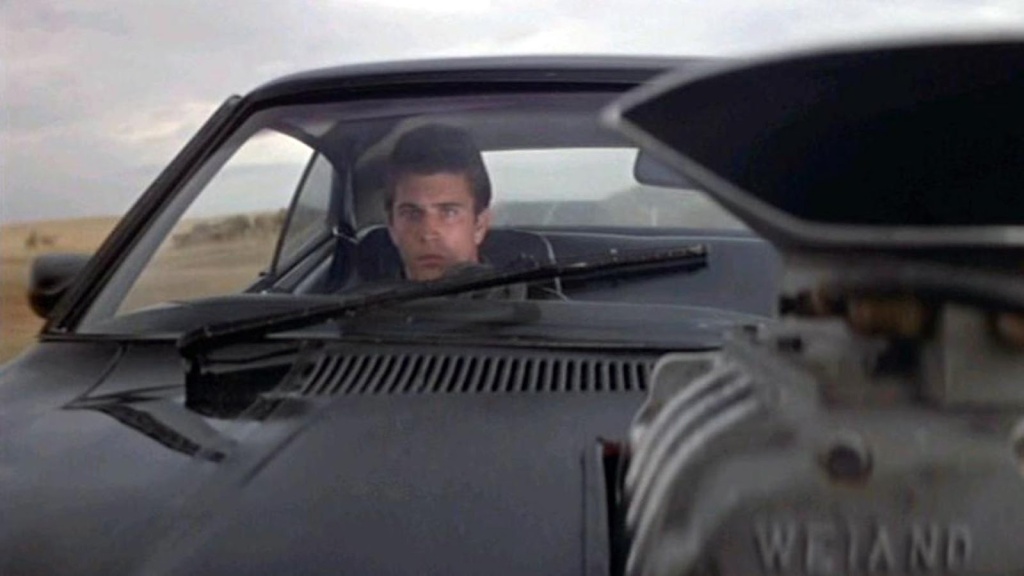
Wells talks about the tender side to Gibson as well: “Mel used to spend most of his nights, when we were going and doing something, in my room ringing his wife, who was about to have a baby. And he was very excited and wanted to know what was going on,” says Wells. “I can only tell you of what I know of the guy I spent all those days in the desert with, freezing my ass off, and getting ripped off at the card table with. That’s what my whole basis of him as a person is. I loved the guy that was there. We bonded.”
In the years since THE ROAD WARRIOR wrapped, Wells has intermittently kept in touch with Gibson, and remains in contact with various other cast and crew members, from George Miller and cinematographer Dean Semler to Warrior Woman Virginia Hey and Minty, who is now well into adulthood: “If I go back to Australia and I go to Sydney, I always give him a buzz and we have lunch or something,” says Wells. “He’s a very highly regarded jewelry designer, and he has a wife and a couple kids.”
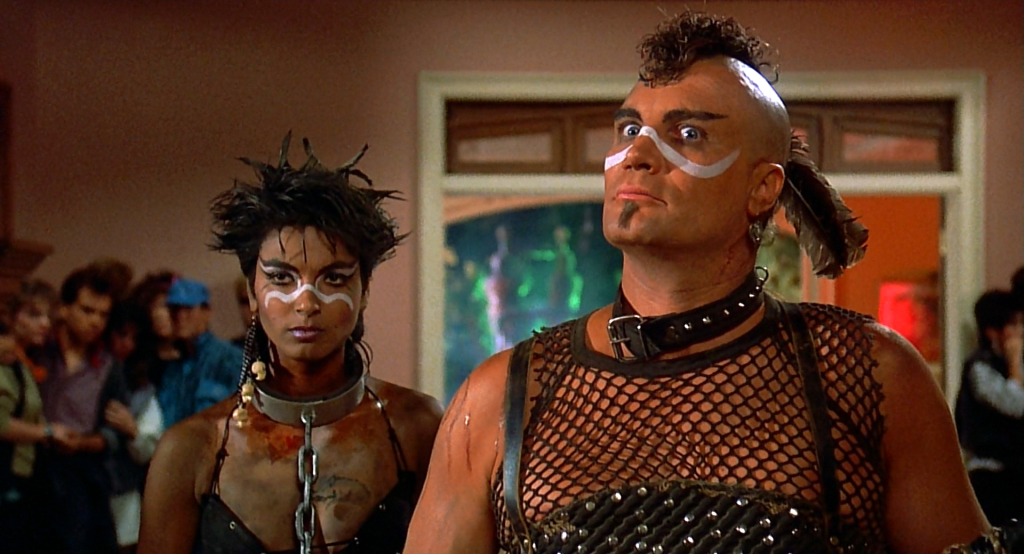
After THE ROAD WARRIOR became a worldwide hit, the offers started pouring in for Wells, and he found his first film job opportunity in the United States starring in the John Hughes nerd comedy-fantasy WEIRD SCIENCE — playing a fierce biker that was essentially the same character as Wez and delivering such zingers as, “How come two unpopular dicks like you is havin’ a party?” and, “How would you like all your friends here to know that you wear a bra on your head?” But Wells says he had zero concerns about being typecast as a punk psychopath apocalyptic biker killer. “People offered me a job; I was the happiest person in the world,” he says, adding modestly, “I never thought I knew anything, and I still don’t. I just get out there and I try to do the best I can and make it work, and I’m grateful of the other people who work with me. … I was graced with the fact that the people that I’ve worked with were brilliant, the directors were amazing, the stars, the crews — everybody helped me.”
Reflecting on the two cinematic follow-ups to THE ROAD WARRIOR as well as the legacy of the franchise’s enduring characters, Wells has a few choice words. When MAD MAX BEYOND THUNDERDOME is brought up, he rolls his eyes, then says diplomatically, “I never thought the film was a bad film. I just didn’t think it was part of the MAD MAX trilogy. It was just another film that didn’t work, to me. … The main thing a film revolves around is a good villain. If you don’t have a good villain, there’s nowhere to go. You’ve got to have the reason for the hero, and the reason for the hero is you always have a good villain that has to be taken care of. Who did they have as the villain in THUNDERDOME? They had this wonderful female singer [Tina Turner]— who everyone on god’s planet adores — as the villain. That just didn’t work. The reason that THE ROAD WARRIOR and MAD MAX worked was you had Toecutter and the boys that were evil, and you really wanted Mel to [screw] them over bad. You had me in the second one, and everybody wanted that clash; they were waiting for it. You had the villain you could hate. … That’s what film is based on — that perception of good vs. evil. When you take that away…”

Wells shows much more enthusiasm for 2015’s MAD MAX: FURY ROAD, which was three decades in the making. “It’s going back to what George does best — the road movie — this continuous heartbeat of savagery and humanity that ends somewhere with an enormous crash.” And while he thinks Tom Hardy pulls off a great version of the titular character, he proclaims, “I think there is no Mad Max without Mel. Mel is the definitive Mad Max, the same as there’s only ever going to be one James Bond. Everyone that came after Sean Connery is a different James Bond. … I think Mel will always be regarded as THE Mad Max.”
On the same token, could there ever be another Wez? “I seriously think that it would be very difficult to duplicate me, because it’s kind of a unique character,” says Wells. “Mel’s character is the hero; he has a set of principles that he has to abide by. It’s a much more boxed-in characterization. I could go and stomp on small animals and everybody would cheer.”
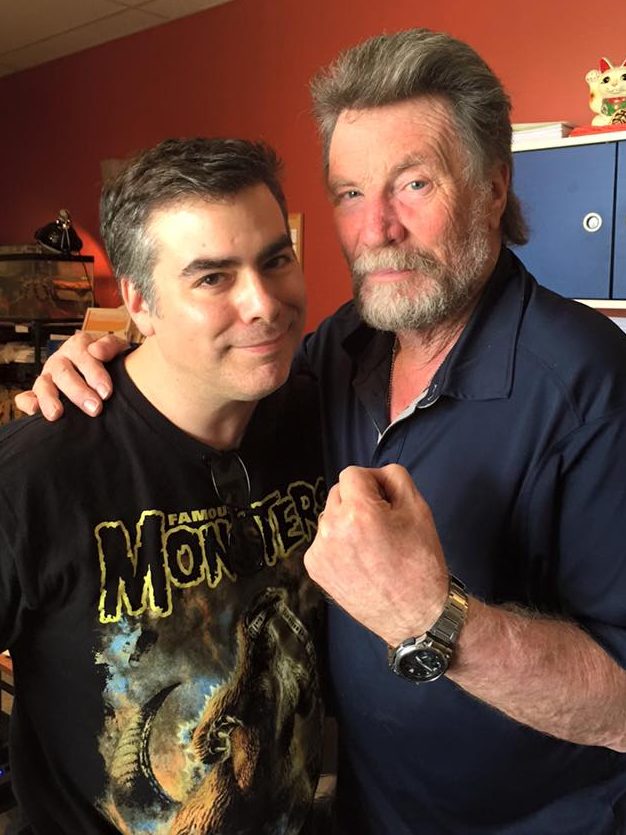
The aged Aussie actor concludes, “I love this series. To me, MAD MAX was what created my career. George created me. This man taught me more in the time that I worked with him than I will ever learn for the rest of my life. He just was the most amazing human being. Mel was the same. Mel taught me more than I will ever learn with other actors of how to react to things, of how to be things.The first movie that you do is the thing that sets the boundaries of what you do later. I was fortunate that the first movie I did was so brilliant. So I’ve been forever grateful for that.”
In addition to being an actor, Wells is also an activist: His pet project is Wolf Connection,a model program that rescues and rehabilitates wolves and wolfdogs to serve at-risk populations including foster children, gang members and persons recovering from substance abuse. For more information on how to get involved, go to wolfconnection.org.
(A version of this article first appeared in Famous Monsters of Filmland issue #280)
###
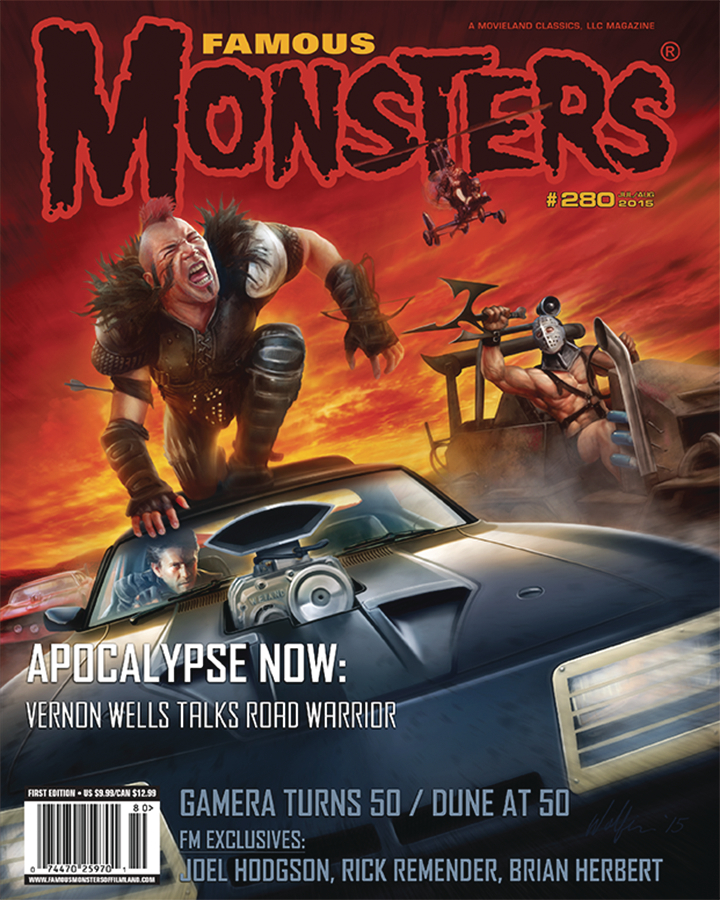
______________________________________________________________________________
Writing and maintaining IT CAME FROM… is a true labor of love.
Please consider showing your appreciation and helping to keep the site ad free and free for all (no paywalls) by donating a couple bucks with BUY ME A COFFEE. It’s quick and easy!

